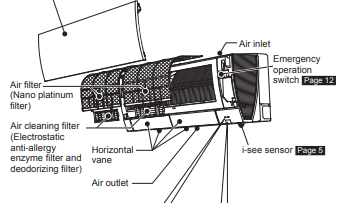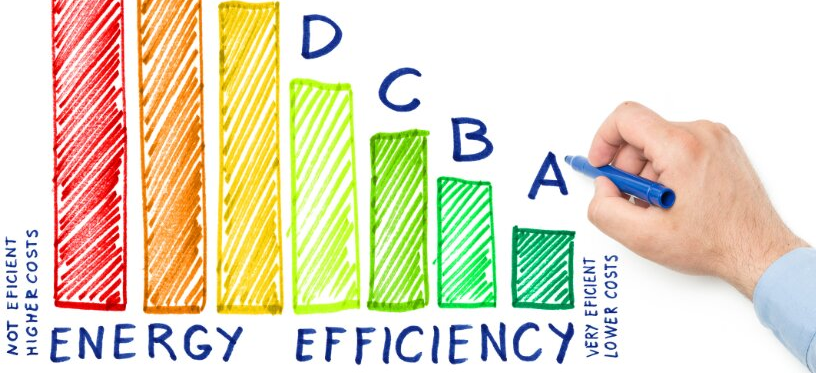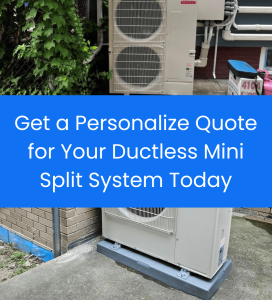Shocking Truths Revealed: Uncover The Real Energy Cost of Mini Splits Today!
Welcome back to the Richair Comfort Solutions blog! If you’ve been searching for a cost-effective home cooling solution, ductless mini split systems are worth a close look. But you may be wondering: do mini splits use a lot of electricity driving up energy bills? Read on for the answer. We'll compare mini splits versus old-fashioned air conditioners on energy efficiency and other factors. You’ll learn just how much electricity these convenient cooling units consume in typical homes. We'll also provide tips to save even more on energy costs with your mini split. Let's dive in!
Table of Contents:

Shocking Truths Revealed: Uncover The Real Energy Cost of Mini Splits Today!
No, mini splits do not use a lot of electricity compared to traditional central air conditioning units. On average, ductless mini split systems consume 30-50% less energy than central AC units
Do Mini Splits Use a Lot of Electricity?
No, mini splits do not use a lot of electricity compared to traditional central air conditioning units. On average, ductless mini split systems consume 30-50% less energy than central AC units.
The advanced inverter-driven compressors in mini splits optimize electrical usage by providing variable cooling capacity that matches conditions. Higher SEER ratings, minimal ductwork, and independent temperature zones also contribute to the improved energy efficiency of mini splits. While factors like oversizing, extreme weather, and insufficient insulation can impact energy use, following basic recommendations for proper sizing, smart controls, and home sealing/insulation allows homeowners to minimize mini split electricity consumption. So in most cases, installing new high-efficiency ductless mini splits results in noticeably lower summer electricity bills thanks to their energy saving technologies and architecture. Mini splits require less electricity than central AC overall.
Mini Split AC Units: How Much Electricity Do They Use?
Many homeowners experience sticker shock when opening summer electricity bills. Running an aging, inefficient air conditioning system can voraciously consume power. Mini split systems offer a modern solution for zoned cooling with less energy waste.
Key Takeaways Up Front:
- Mini splits are 30-50% more energy efficient on average than central HVAC units
- Inverter-driven compressors optimize electrical usage as conditions change
- Minimal ductwork slashes wasted energy from leaks and conduction losses
- Independent temperature zones prevent unnecessary cooling of unused spaces
- Proper sizing and smart controls further reduce mini split power consumption
Now let's analyze why electricity bills with mini splits tend to run lower.
Mini Split Efficiency Outpaces Central Air Conditioners
Two core technologies set ductless mini splits apart when it comes to electrical demand: inverters and variable refrigerant flow. Together, they enable precise matching of cooling output to existing conditions for optimal efficiency.
Inverter-Driven Variable Capacity Operation
The compressor inside a mini split runs at variable speeds matching each zone's temperature needs. Traditional AC units simply switch the compressor fully on or off. Constantly "cycling" output leads to temperature fluctuations and sacrifices efficiency. Inverter compressors in mini splits ramp up and down incrementally, fine-tuning cooling power along the way. This prevents wasteful overcooling and allows indoor temperatures to hold steady. The result is reduced electricity usage averaging 30-50% savings over central systems.

Mitsubishi Mini Split

Higher Efficiency SEER Ratings
In addition to their advanced variable capacity operation, mini split systems achieve much higher Seasonal Energy Efficiency Ratings (SEER):
- Mini splits range from 15 SEER up to 26+ SEER
- Central air conditioners typically rate only 13-18 SEER
So replacing an aging 13 SEER unit with a new 20 SEER mini split makes a major dent in home energy expenditures over the years. And upgraded insulation or sealing air leaks before installing the mini split magnifies long term savings.
Minimal Ductwork Prevents Huge Losses
Energy loss from leaky, inefficient ductwork adds up fast in central HVAC systems. Plus, forcing air through extensive duct networks generates heat and friction wasting more energy. Mini splits use minimal ducting, mainly short linesets carrying refrigerant between the outdoor condenser and discrete indoor evaporators mounted high on walls. This direct, short-run configuration avoids duct losses which can account for 30% or more of a central system's energy use.
Zoned Control Cools Only Where Needed
Finally, heating and cooling the whole house while only occupying a room or two makes no sense! Mini splits let you set independent temperature control by zone, so you’re not driving up energy bills cooling unused places. Zoned comfort also allows tailoring conditions in living spaces, home offices or bedrooms matching what makes occupants comfortable there. Central HVAC struggles with balancing different demands. In summary, mini split systems consume far less electricity than older central air conditioners by leveraging more advanced, efficient equipment and architecture. Now let's see what design factors affect mini split energy use.
SEER Rating Impact on Energy Costs
If a home needs to upgrade its air cooled unit, you might wonder whether the SEER rating is beneficial. Generally, the higher the SEER ratings the more efficient the AC units and the more energy efficiency possible. Lower energy required for the same cooling is reflected by more efficient cooling equipment. It can save up to 40% on your electric and cooling costs.
What Impacts Electricity Use in Mini Splits?
Mini split electricity consumption varies mainly based on four factors:
- System size and cooling capacity
- Operating hours and temperature settings
- Number of indoor evaporator units
- Level of home insulation
System Size and Cooling Output Capacity
When considering a new mini split, resist oversizing the equipment. This leads to shorter run times and increased cycling which undercuts efficiency gains from the variable capacity compressor. Work with a sizing specialist to select adequate but not excessive cooling output. Generally, mini splits work most efficiently when running for longer intervals at part load. Oversized systems never reach their peak efficiency sweet spot.
Climate Conditions and Temperature Settings
The cooling load put on your mini split and total run time depend greatly on your climate and thermostat setpoints. Mini splits operate more during hot summers, increasing electricity usage. Keeping setpoints conservative when possible will save energy. In very hot or humid regions, the system must work harder to remove heat and moisture. High seasonal demands can be offset somewhat by upgrading home insulation. Tighter building envelopes require less cooling energy input.
Number of Indoor Units and Operating Zones
Adding more indoor evaporators or heads boosts your comfort but also adds to electricity use if you run more zones routinely. Pick your priority zones for cooling based on occupancy patterns. Close off spare rooms to reduce system workload. Consider wiring two or more smaller zones to operate in tandem when needed. For example, combine a living room and dining area to function as one large zone instead of two small zones running concurrently.
Insulation Levels and Air Sealing
Your home's insulation integrity directly correlates to mini split electricity consumption. Upgrading insulation and sealing uncontrolled air leaks could enable installing a smaller, more energy efficient mini split system. Heat and humidity ingress stress AC equipment, making cooling more costly. Perform an energy audit to find weak spots for sealing up, adding insulation, or swapping out windows and doors. The effort pays off for better efficiency, comfort and indoor air quality.
5 Easy Ways to Further Reduce Mini Split Electricity Usage
Take advantage of all a modern mini split system offers to minimize energy consumption. Follow these simple energy saving tips:
- Use smart schedules and thermostat settings - Program cooling schedules for occupied hours and allow a bit more variance when away. Smart controls also enable limits on max runtimes.
- Clean air filters routinely - Dirty clogged filters make systems work much harder. Stick to the recommended schedule, around once per month.
- Close vents and doors to unused spaces - Isolate zones not currently occupied to avoid needlessly conditioning them.
- Capitalize on milder weather - Open windows in spring and fall to naturally ventilate instead of running the AC.
- Stage multiple units - If adding more than one head, consider wiring as master and slave to alternate operation for better efficiency.
The Verdict: Mini Splits Use Less Electricity Than Central AC
In climates requiring home cooling, ductless mini splits generally consume far less energy than outdated central systems. After upgrading to a modern mini split, most homeowners see their seasonal energy bills decrease notably. Factors like oversizing, extreme weather or inadequate insulation can impact electricity usage. But following our energy saving tips while enjoying whisper-quiet, zone-controlled comfort, you can minimize mini split consumption.
Ready to gain control over your indoor comfort and energy costs? Contact us today to request a free, no-obligation estimate. Our energy experts will help select the properly sized mini split equipment and ideal configuration to maximize efficiency. We can also advise on insulation upgrades and air sealing if needed in your home. Beat the summer heat and household budget worries with ductless mini split installation from the trusted comfort advisors at Richair. Reach out today to start your journey toward enhanced comfort and lifestyle.





